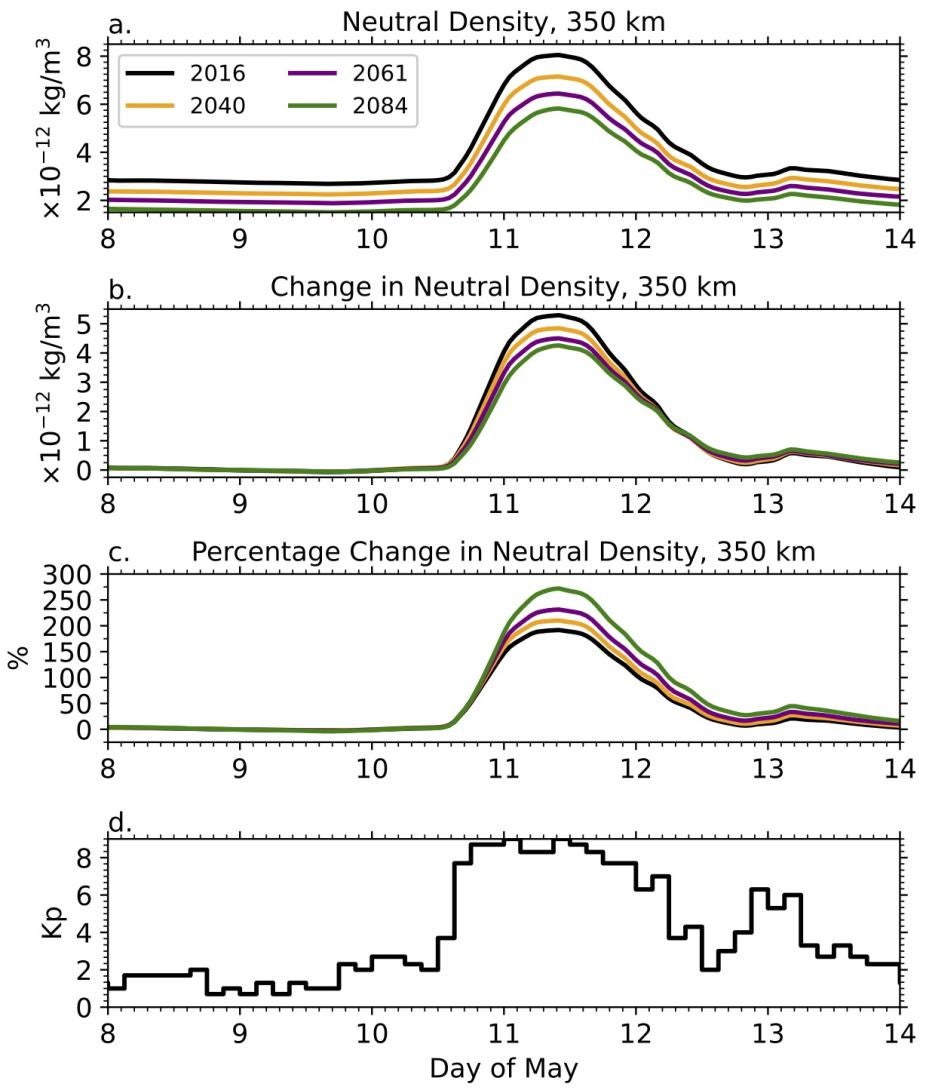
CESM(WACCM-X) (a) absolute global mean thermosphere neutral density, (b) storm-time change in global mean thermosphere neutral density, and (c) relative storm-time change in global mean thermosphere neutral density. (d) Geomagnetic Kp index used as forcing in CESM(WACCM-X). The CESM(WACCM-X) neutral density results are at an altitude of 350 km, and the storm-time changes are calculated relative to the average values on May 8-9 in each scenario. The storm is simulated in years 2016, 2040, 2061, and 2084, which have surface CO2 values of 403, 500, 652, and 918 ppmv.
Geophysical Research Letters: Geomagnetic storms lead to large changes in the Earth’s upper atmosphere (ionosphere and thermosphere) that can have adverse effects on technological systems, such as GPS positioning and orbits of satellites in low-Earth orbit (200-2000 km). It is now understood that increases in greenhouse gas concentrations result in a decrease in the thermosphere neutral density. This is primarily due to CO2 being a radiative cooler at high altitudes, leading to a reduction in temperatures in the mesosphere and thermosphere, and a contraction of the upper atmosphere. The ionosphere is also impacted by changes in CO2. The present study is focused on understanding how changes in the background state of the upper atmosphere due to increases in CO2 alter the response of the ionosphere and thermosphere to geomagnetic storms. Using a coupled Earth system model that includes an atmospheric component that extends to the ionosphere and thermosphere, the response of the upper atmosphere to a geomagnetic superstorm is simulated for different levels of CO2 concentrations. It is found that increasing levels of CO2 generally result in a weaker response of the ionosphere and thermosphere to geomagnetic storms in absolute terms, while their relative responses enhance at higher CO2 levels.